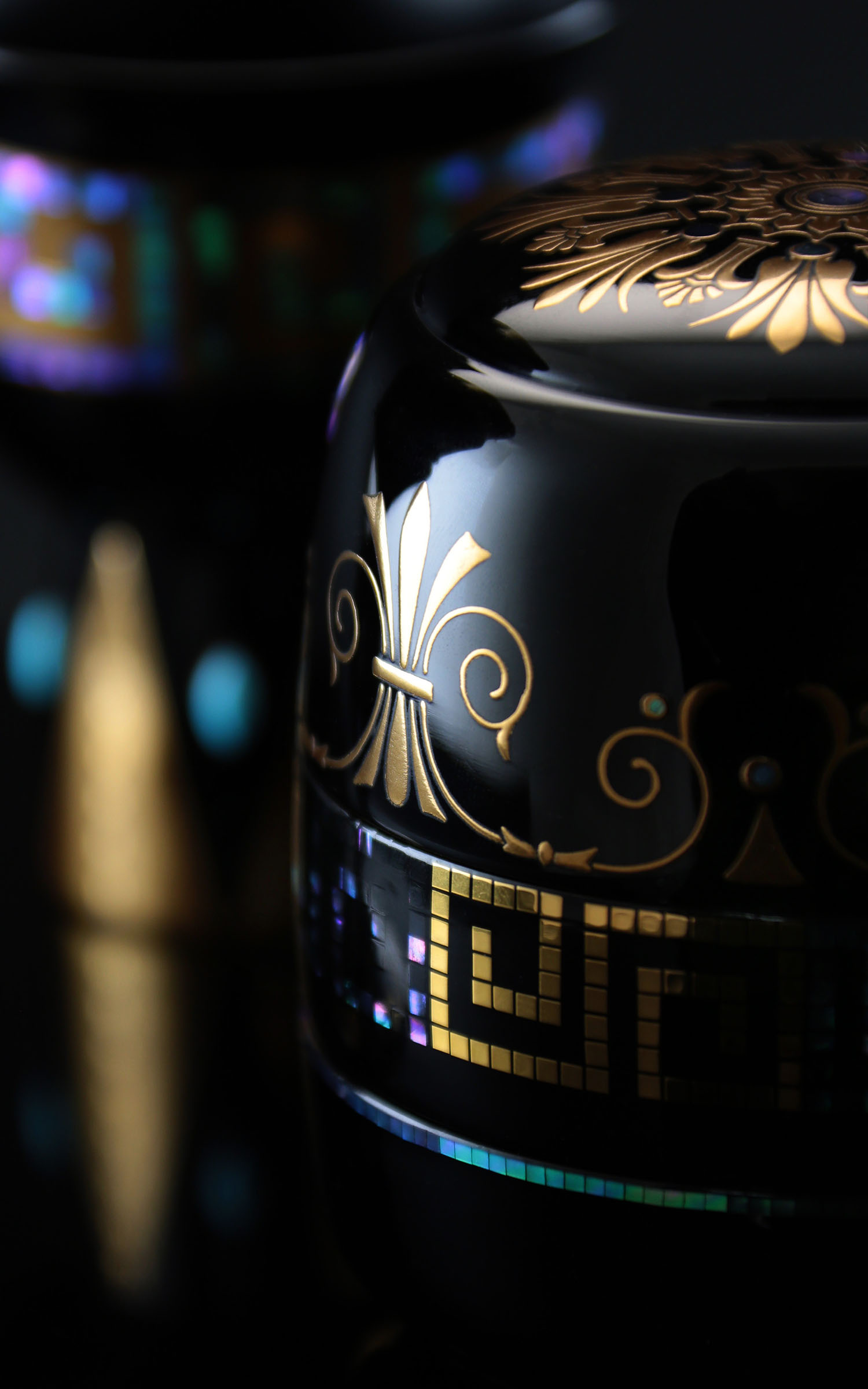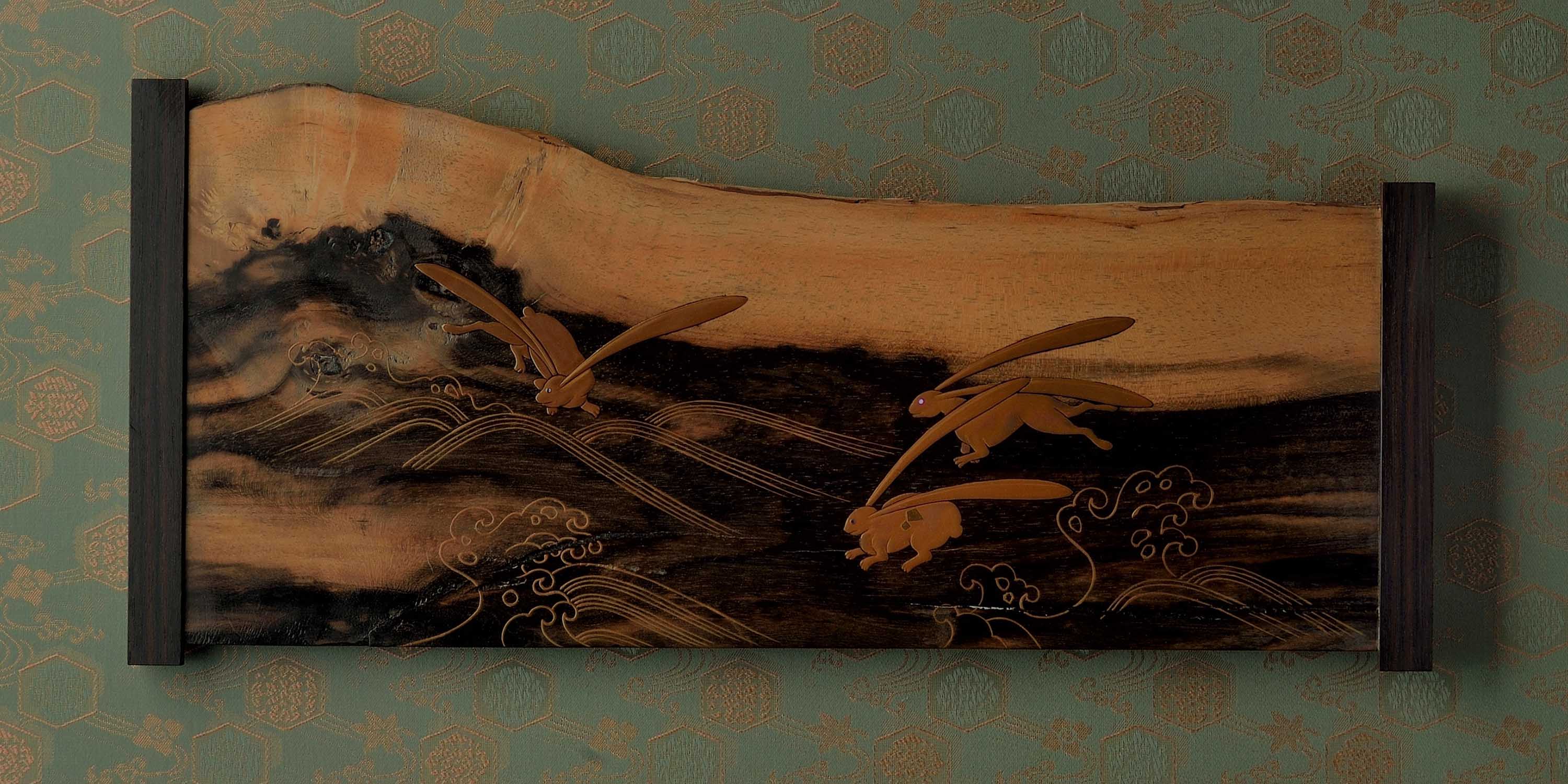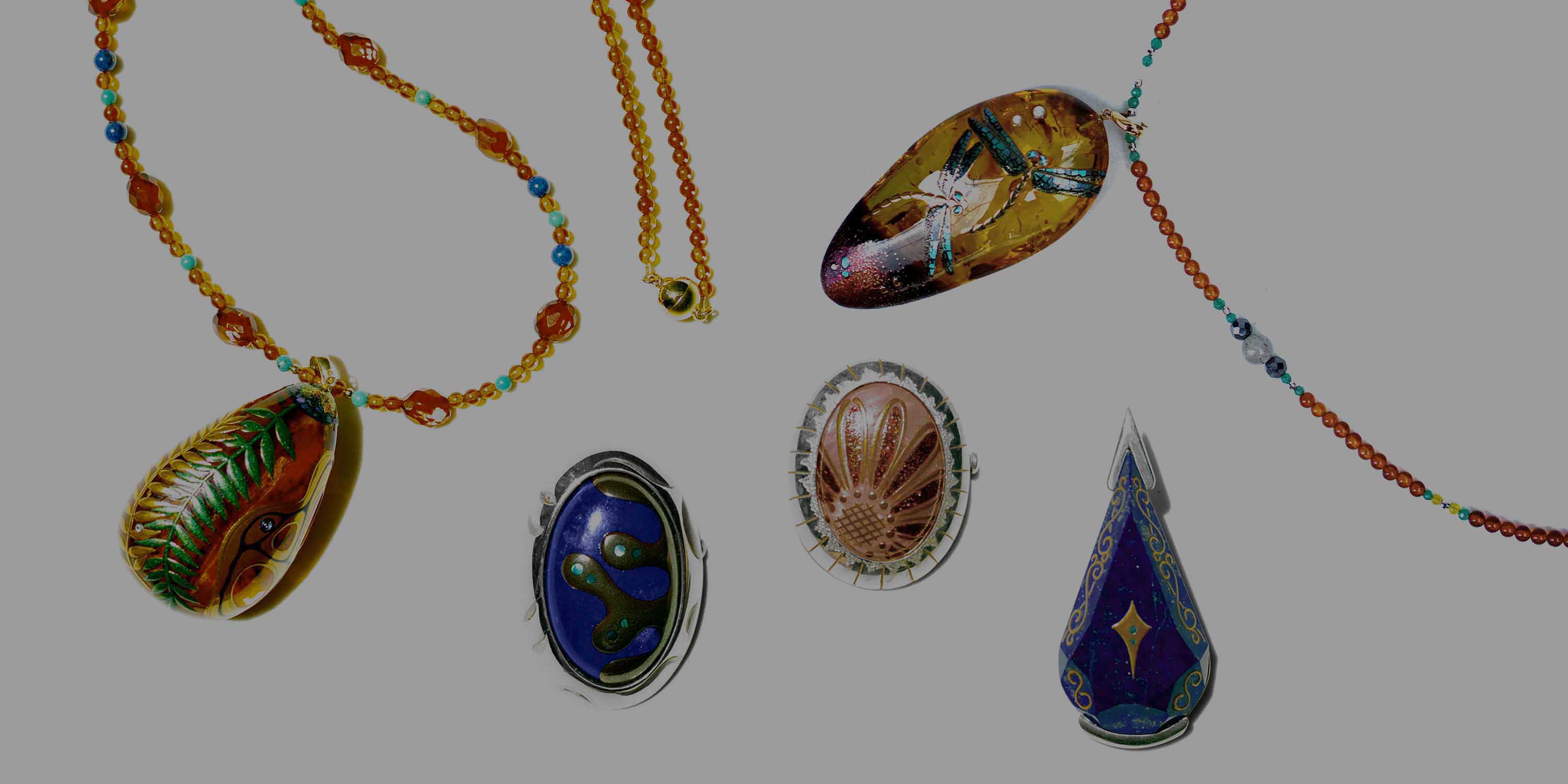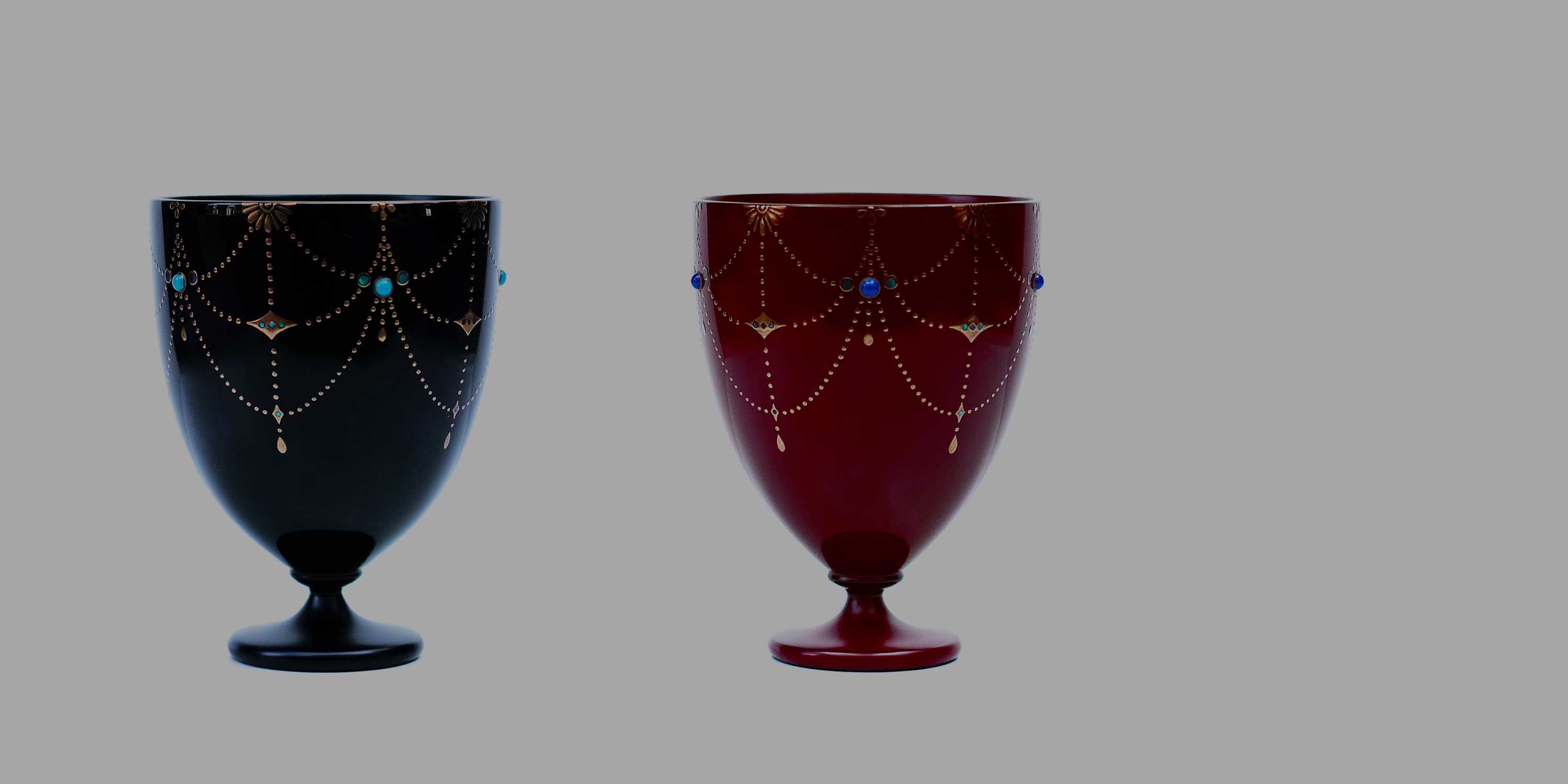
What is Yamanaka Lacquerware?
 Lacquerware is an art form that appears familiar to many, and while its evident beauty is experiential, the traditions, history, and techniques of creating lacquer may not be as well-known as what you see.
Lacquerware is an art form that appears familiar to many, and while its evident beauty is experiential, the traditions, history, and techniques of creating lacquer may not be as well-known as what you see.
So how is lacquerware created by artisans in ateliers?
Away from large-scale production, the effort to create art takes enormous time, effort, and concentration.
What makes the final product possible is the result of that triad of strengths; and what makes those strengths possible is adherence to techniques fostered in history.
While the creation of new work is indeed an artist’s response to current times, their technique--their skill set--is unchanged.
The lacquerware of Yamanaka, a hot springs village located in a mountainous region of Ishikawa Prefecture, is renowned in Japan.
With a history stretching back over 450 years, the craftsmanship needed to create lacquerware here benefits from the use of extraordinary tools.
These tools, often made by hand, enable artists to create products of great refinement used, for example, in the famous tea ceremony, such as the chawan (tea bowl), chaki (tea container), and the chashaku (tea scoop).
The element of makie, a type of gold leaf embellishment applied to the lacquerware, is essential to the aesthetics.
Yamanaka makie is a technique that developed over centuries, during the Edo period from 1603 and 1868.
Artists from Kyoto, Aizu, and Kanazawa were fundamental to the establishment of a tradition that is the foundation of techniques used today.


Who Is the Artist?

松山 武司
I was born in Yamanaka, and very early on, as a child, had the opportunity to observe my father’s work creating makie lacquerware. Those observations had a huge impact on me as a person and artist. I understood the value of the art and felt tied to it through my family.
My father initially studied the craft of lacquerware in Akita, and then moved to Fukushima Aizu, where he worked onAizu lacquerware. Settling at last in Yamanaka, he made established a makie studio here. During Japan’s postwar economic boom, plastic resin products were introduced; using new silkscreen technology became an expedient way to make products for the marketplace.
As we both got older, it was a natural transition, father to son, and when the time was right for both of us, it became clear that it was my turn to carry on the family tradition of creating makie.
After taking on the responsibility of the family business, I had to learn hand-drawn techniques. This was back when no one had personal computers. It was necessary, therefore, to draw the original silkscreen board by hand.
I began my apprenticeship under lacquer artist Kasho Yoshida. Through my work with Yoshida-san, I gradually acquired skills needed first to observe what he was doing. I was fascinated by the time it took him to create; his unwavering commitment to traditional techniques; and, his extraordinary aesthetic.
At last, confident but still learning as an artist, I established in 1985 the T.M. Japan Art Studio in Bessho-cho, Kaga City, Ishikawa Prefecture. The starting point is having an artistic home where I grew up and initially watched my father work. That relationship to place and family are inspiring.
My work is created with awareness of the necessity of keeping alive traditional techniques of Makie during our current period of global growth and competition. The mass production of what was held for centuries to be an artistic endeavor puts pressure on artists to maintain technical integrity. Thinking of those sorts of challenges can be inspiring to those of us invested in preservation of cultural legacies.
Maki-e techniques are so varied that regardless of the size of the work, the number of days of production can depend on the complexity of the design and the difference in technique. For example, even a simple design for earrings, brooches, etc. can take two weeks or longer to complete. In addition, even if an object is small, it may takes two or even three months for completion.
When it comes to matters of design, I try to consider integration of technique and imagination. That’s the task of any artist! To be true to the form while being imaginative.
Over the years, after working under strict guidelines that dictate form and expression, such as making utensils for the tea ceremony, I was delighted to be able to design freely without restrictions. As a result, possibilities of expression expanded: creating maki-e with motifs that had never been seen before.
One of the artists I look up to, and feel inspired by, is Kyohei Tsutsumi, a leading Japanese composer who passed away last year. Over the years, Tsutsumi produced a wide range of songs: Popular, rock, and more serious compositions. His ability to work within so many genres was so wide that I felt a kind of pleasant shock: He gave me the courage to create works that are not caught up in the framework of the times and design, so that people can think, "Was this one work made by the same person who made this other work?” I want to continue to challenge myself because art is about change.
To be clear: I am not only concerned with designs and motifs. There are many types of art in the world, of course, and I want to put value not only on seeing and feeling the resulting work, but also on what led up to its creation. What were the thoughts and feelings that were necessary for the artist? When people who have seen my work, and care enough about it to bring into their homes, I think it’s essential that they know a little bit about the artist and the work that led to what they hold in their hands. A look alone is not enough.
A Bit More History
Each piece is made slowly, painstakingly, and by hand in my studio.
Lacquer is a natural paint that has been used in Japanese life as far back as the Jomon period, from 10,000 to 300 B.C.E. Its role was traditionally to prevent rust in objects, waterproof objects, and preserve objects.
Maki-e is a uniquely Japanese technique, unparalleled in the world, that adds togold or silver to lacquer, hardening that surface with lacquer again, sharpening it after drying, and polishing it it over and over again.
Many kinds of maki-e techniques are possible.
Hiramyo-e, for example, involves drawing with a brush and sowing in gold powder, and further polishing to create a mirror finish.
High maki-e raises three-dimensionally.
A type of sharpening maki-e casts shades of perspective by making full use of shading.
In addition, other surfaces can be added to the lacquer, such as gold and silver boards.
Lacquer has the rather delicate property of curing only at a constant humid temperature, so it takes at least a few weeks for the work to be finished.
Overall, creating one memorable piece requires precision, patience, imagination, and technique.

Installations
Group Exhibition at Takashimaya Osaka Art Gallery, "The Look of Contemporary Lacquer Art” (2019)
Show Participant at the 7th Soba Inoguchi Art Competition (2018)
Group Exhibition at Nihonbashi Mitsukoshi Main, ”Ishikawa Taste and Skill Hospitality Exhibition” (2015)
Solo Exhibition at Takasaki Suzlan Department Store (2014)
Solo Exhibition at Takasaki Suzlan Department Store (2013)
Solo Exhibition at Daiseiji Craft Space Fuzon, Kaga City (2011)
Solo Exhibition at Nihonbashi Mitsukoshi Main Store 6F Arts and Crafts Salon (2006)
Solo Exhibition in Vancouver, Canada (2005)
Solo Exhibition at Washi Club, Osaka (2004)
Solo Exhibition at Komatsu Daiwa Art Salon (2003)
Solo Exhibition at Komatsu Daiwa Art Salon (2002)
Solo Exhibition at Daiseiji Gallery Hagi, Kaga City
Ishikawa TOYP Grand Prize (2001)
Group exhibitions in Osaka, Yokohama, etc. (1992-1997)






